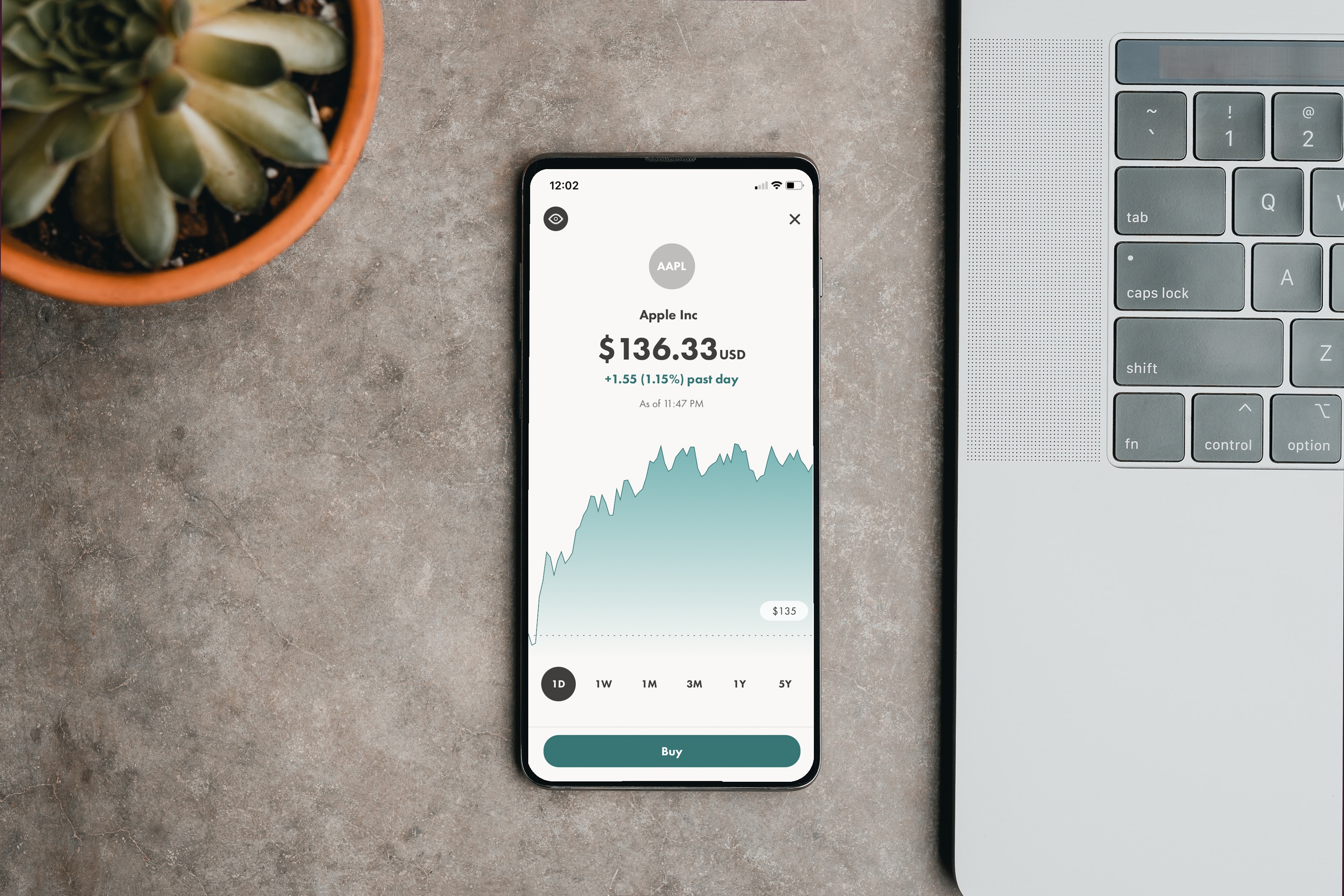Comparing Investment Platforms: Finding your fit
Today more than ever people are stepping up to the task of investing their own money. Whether your goals are saving for a big purchase, buying a house, securing retirement or a step towards financial freedom, investing is a smart way to make the most of your money.
Kiwi investors looking to invest both at home and abroad now have a growing selection of options to access financial markets. We will compare Sharesies, Hatch, ASB Securities and Stake. These platforms cater to different users and we will explore how to decide which one fits you best.

Key aspects for comparison
We’re going to focus in on the core features offered by each platform, the user experience and the fee structure. Keep in mind how experienced you are with investing and how often you intend to trade when considering these. It would be worth signing up for a couple options and checking them out before deciding to start investing.
Core features
Each trading platform offers slightly different features. The importance of these will depend on your investing journey and how ‘hands-on’ you want to be.
Trading platforms provide access to investments through stock exchanges. However, what exchanges you can access varies by platform. Stock exchanges are essentially a marketplace bringing together buyers and sellers of shares. NZX and ASX are the largest stock exchanges in New Zealand and Australia respectively. The NYSE is the largest exchange in the world based in New York, while the NASDAQ is another American exchange popular with technology companies.
Sharesies provides the most comprehensive access to markets including NZX, ASX, the NYSE, NASDAQ and CBOE whilst others such as Hatch and Stake are more specialised in offering only American exchanges. ASB Securities focuses on the Australasian markets.
All the platforms we’re comparing have access to ETFs (these allow you to invest into a ‘basket’ of companies) but ASB Securities is the only option with access to bond markets (allowing you to buy debt). ASB Securities is also the only option that allows margin lending (allowing you to borrow money from the platform using your portfolio as collateral).
Sharesies and Stake are the only platforms to offer a mobile app. Both apps provide full-fledged access to view your portfolio and make trades.
Stock exchanges
Sharesies - NZX, ASX, NYSE, NASDAQ and CBOE
Hatch - NYSE and NASDAQ
ASB Securities - NZX and ASX
Stake - NYSE and NASDAQ
Auto-invest feature
Sharesies - Yes, Hatch - Yes, ASB Securities - No, Stake -No
ETF trading
Sharesies - Yes, Hatch - Yes, ASB Securities - Yes, Stake - Yes
Margin lending
Sharesies - No, Hatch - No, ASB Securities - Yes, Stake - No
Bond markets
Sharesies - No, Hatch - No, ASB Securities - Yes, Stake - No
Companion app
Sharesies - Yes, Hatch - No, ASB Securities - No, Stake - Yes
User experience
Let's get something out of the way; investing can be scary and confusing. That’s only natural, financial markets are complex and investors move around significant sums of money. This makes having a simple, straightforward user experience crucial for a trading platform.
Sharesies has arguably the most ‘beginner-friendly’ user experience out of these platforms. The process of opening an account and depositing money into it is straightforward and well guided. Buying and selling shares is simple, users are prompted to enter a dollar amount to purchase or quantity of shares to sell and Sharesies actions the trade. The portfolio tab provides a decluttered view of your current holdings and performance to date with key metrics focusing on return and a quick measure of how ‘risky’ your portfolio is. Advanced users may find the lack of more detailed information disappointing but we think beginner investors will welcome the simplicity. Sharesies has the additional benefit of a mobile app which provides a very similar experience to the desktop one. Stake is the only other platform considered which offers an app.
Hatch’s setup process is relatively straightforward and well-guided. Their website is easy to use and keeps the information presented to users down to the basics such as price data and some basic stock ratios. Their auto-invest feature differs from Sharesies’ in that it is set per stock or ETF. Some users will find this preferable to the basket of funds approach Sharesies takes.
Setting up an account for ASB Securities is relatively simple for existing ASB customers but non-ASB customers will find the process longer. The user experience of trading with ASB is less suited to beginners than the likes of Sharesies and Hatch. Options such as holding shares purchased with ASB using a Common Shareholder Number (CSN) or via a Nominee Company (this one costs extra, see below) will be welcomed by some users but add extra complexity to the process for others. We think ASB is better suited towards those with experience or who want complete control over their shares.
Stake has a very crisp and modern feeling interface that will effortlessly guide you through the account setup process. Buying and selling stocks is easy and intuitive and more experienced investors will appreciate the stock information available, including a candlestick chart. Like Sharesies Stake also offers a mobile app which makes investing and viewing your portfolio on the go a pleasant experience. Stake Black subscribers can even view financial statements and analyst ratings from the stock information screen. The user experience is clearly tailored towards those who are interested in actively trading stocks compared to Sharesies and even Hatch.
With listings from the NASDAQ and NYSE Sharesies, Hatch and Stake all provide investors access to some of the world’s largest and most well-known companies such as Apple, Tesla, Amazon and Microsoft. But only ASB and Sharesies offers access to New Zealand brands such as Air New Zealand, Xero (listed on the ASX) and Fisher and Paykel Healthcare.

How much does it cost
The cost of trading can have a significant impact on your portfolio value over time. When comparing fee structures keep in mind how often you intend to deposit and withdraw money, convert money to foreign currencies and buy or sell shares.
Sharesies no longer charges a subscription fee to account holders. Instead, users will only pay fees when trading shares and currency. Transactions up to $3,000 will incur a fee of 0.5% whilst any dollar over $3,000 will incur 0.1%. A foreign exchange fee of 0.4% is charged for exchanging between NZD, USD and AUD. Keep this in mind if you plan on purchasing overseas stocks on Sharesies.
Hatch charges users a 0.5% fee to exchange money, keeping in mind all stocks offered by Hatch must be traded in USD. Transactions of up to and including 300 units of shares will incur a flat fee of 3 USD, plus an extra 0.01 USD for each additional share over 300. Note that this differs from the other platforms which charge by the value of transactions, not volume of shares.
For New Zealand trades under $1,000 ASB charges a fee of $15, this increases to $30 for trades up to $10,000 and 0.3% for any exceeding this. Australian trades are charged a fee of 0.3% with a minimum fee of $30 AUD per trade.
Stake’s fee structure deviates significantly from Sharesies, Hatch and ASB. Instead of charging by the trade, Stake charges a 1% fee on all deposits and withdrawals. There are no additional foreign exchange or trading fees.
To explain in more detail, let’s take a simple example. Assume you open an account with each platform and invest $5,000 NZD buying 500 shares of a company foreign for $10 NZD per share.
Fees (NZD):
Trading Fee - Sharesies - $17, Hatch - $7.25, ASB Securities - $32.17, Stake - N
FX Fee - Sharsies - $20, Hatch - $25, ASB Securities - N/A, Stake - N/A
Deposit/Withdrawal Fee - Sharesies - N/A, Hatch - N/A, ASB Securities - N/A, Stake - $50
Total - Sharesies - $37, Hatch - $32.25, ASB Securities - $32.17, Stake - $50
(Note: USD and AUD converted to NZD as at 21/03/2022)
With Sharesies, you pay $3000 * 0.5% + $2000 * 0.1% = $17 NZD in trading fees plus an additional $5000 * 0.4% = $20 NZD in exchange fees. Your total charge is $37 NZD.
With Hatch you pay $5000 * 0.5% = $25 NZD in exchange fees and 3 USD + USD 0.01 * (500 - 300) = 5 USD (7.25 NZD) in trading fees (for 500 units). Your total charge is $32.25 NZD.
With ASB, you pay a flat fee of $30 for a New Zealand trade of between $1,000 and $10,000. If we choose Australian shares this would be $30 AUD (32.17 NZD).
With Stake you simply pay a $5000 * 0.01 = $50 deposit fee and no foreign exchange or trading fees. This is regardless of how frequently you trade.
In our scenario ASB Securities and Hatch cost around $32, with Sharesies slightly more at $37 and Stake at $50. But note how easily this can change if we adjust trading habits. Stake’s fee will not change however often you trade. The flat fees charged by ASB and Hatch can very quickly add up if we invest across multiple transactions or investments whilst Sharesies’ will not.
Additional functions
Some platforms can come with optional subscription-based services. None of these impact your ability to buy or sell on the platforms nor your access to markets.
For $10 per month users can purchase NZX Market Depth from Sharesies. This provides users will a deep-dive on NZX data including recent trades, detailed price data and trading volume.
For $9 USD per month or $90 USD per year Stake users can purchase Stake Black. This includes access to company financials, analyst opinions and the ability to access sale funds before they are settled.
By default, users of ASB Securities are expected to use their Common Shareholder Number to hold shares in their name. For $125 every 6 months users can instead have their shares held via ASB Nominees Limited, similar to how Sharesies holds shares on behalf of customers. Sharesies, Hatch and Stake do not require you to use a Common Shareholder Number, instead, they use a custody service to hold shares on your behalf.
If you’re interested in the ownership of your shares, Sharesies has an excellent explainer here. Both Stake and Hatch operate a similar custodial service to Sharesies. Simply put, shares are held in a separate ‘Nominee Company’ on your behalf. This means even if the trading platform goes out of business or into liquidation, your shares are protected and belong to you.
Our verdict
Sharesies, Hatch, ASB Securities and Stake each offer seamless access to stock exchanges, allowing Kiwis to buy and sell shares online. Which one you pick will ultimately come down to you.
We would recommend Sharesies for anyone new to investing, or who is looking to invest for the long-term. Sharesies’ simple and friendly experience is perfect for novice investors while they offer unmatched access to foreign markets. But investors looking to trade on a regular basis will find Sharesies lacking the features and stock data they require.
Hatch makes for a useful alternative to Sharesies if you are primarily interested in US markets. Their stock-by-stock auto-invest may be valuable to some and their interface is every bit as easy to use as Sharesies’.
